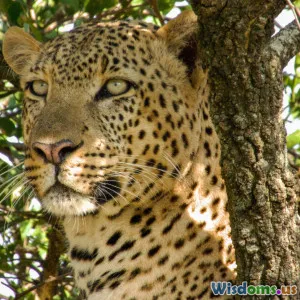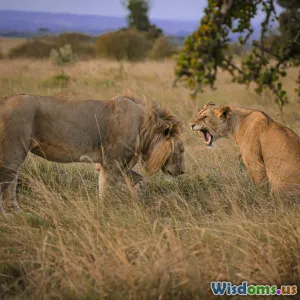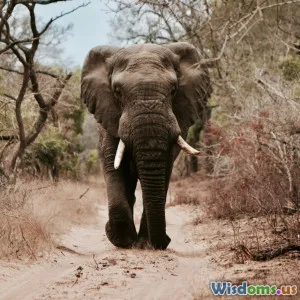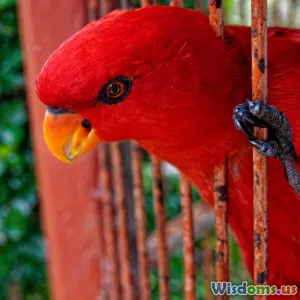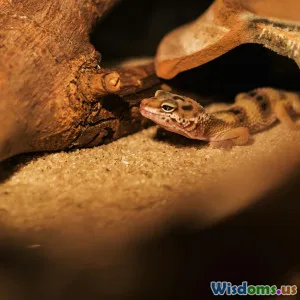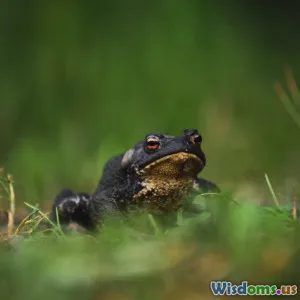
Conservation Challenges in the Modern Era
7 min read Explore the complex conservation challenges in today's world and how we can protect our planet's biodiversity. (0 Reviews)
Conservation Challenges in the Modern Era
Introduction: The Urgency of Conservation Today
In today’s rapidly evolving world, the plight of the animal kingdom has never been more precarious. With over one million species estimated to be at risk of extinction, the scale and pace of biodiversity loss have sounded global alarms. But what are the underlying challenges behind this crisis? How do modern threats differ from past issues? Understanding these conservation challenges is fundamental if we are to reverse trends and foster sustainable coexistence with nature. This article explores the pressing obstacles we face in conserving wildlife today and highlights pathways toward effective solutions.
I. The Multifaceted Threats to Biodiversity
Habitat Destruction: The Leading Cause
Habitat loss remains the foremost threat to countless species worldwide. Urban expansion, agriculture, logging, and infrastructure development have drastically altered landscapes.
For instance, Southeast Asia’s tropical rainforests, home to orangutans and countless other species, have been reduced by over 30% in the last few decades due to palm oil plantation expansion. According to the World Wildlife Fund (WWF), these forests are disappearing at a rate of 1.5 million hectares per year.
The fragmentation of habitats not only reduces living space but also isolates wildlife populations, affecting genetic diversity and the ability to adapt. Species like the Bengal tiger are suffering from such isolation, making conservation more challenging.
Climate Change: A Compounding Crisis
Climate change alters temperature patterns, weather events, and sea levels, profoundly impacting ecosystems.
Coral reefs, often called the rainforests of the sea, have experienced widespread bleaching episodes due to rising ocean temperatures. The Great Barrier Reef in Australia—with over 1,500 species of fish—is emblematic of this crisis. The 2016 and 2017 bleaching events destroyed approximately 30-50% of the reef, severely jeopardizing marine biodiversity.
Furthermore, shifting climate zones force species to migrate to cooler areas, but barriers like cities and roads can block movement, increasing the risk of extinction.
Poaching and Illegal Wildlife Trade
Despite increased awareness, wildlife poaching and trafficking remain rampant.
The African elephant’s population has plummeted by 30% in the last decade due to ivory poaching. Rhino horns, tiger parts, and exotic birds are also highly sought-after illegal commodities. This underground economy not only decimates species but destabilizes entire ecosystems. The United Nations Office on Drugs and Crime estimates wildlife trafficking is a $7–23 billion industry annually.
Invasive Species: Hidden Ecosystem Disruptors
Non-native species introduced by global trade and travel can outcompete or prey on local wildlife.
An example is the Burmese python in Florida’s Everglades, which has contributed to severe declines in native mammal populations. Invasive plants like kudzu in the southern United States smother native vegetation, altering habitats critical for native fauna.
These invasions alter the balance of ecosystems, often with irreversible consequences.
II. Socioeconomic Complexities in Conservation
Human-Wildlife Conflict
As human settlements encroach on wildlife habitats, conflicts arise—crop damage, livestock predation, and sometimes attacks on people.
In rural Africa, communities living near lions or elephants often face economic losses, leading to retaliatory killings. Addressing these conflicts requires integrating local community needs with conservation goals.
Economic Pressures and Political Will
Conservation often competes with immediate economic development interests like mining, agriculture, or infrastructure.
Countries rich in biodiversity but limited in resources might prioritize short-term economic gains over long-term ecological stability. Political will is critical, especially as some governments face corruption or lack policies supporting sustainable resource use.
International cooperation and incentives such as payments for ecosystem services (PES) programs offer hope in aligning economics with conservation.
III. Innovative Responses and Future Directions
Community-Based Conservation
Empowering indigenous and local communities has shown great success.
In Namibia, community conservancies manage over 20% of the country’s land, with tangible wildlife recoveries and poverty alleviation outcomes. This model fosters stewardship, sustainable resource management, and economic benefits from ecotourism.
Technology and Conservation
Modern technology amplifies monitoring and protection efforts.
Drones monitor poaching hotspots; camera traps collect data on elusive species like jaguars; AI analyzes images and tracks migration patterns. Satellite data informs habitat changes and climate impacts in real time.
Further, apps facilitating citizen science broaden public engagement, improving data collection and conservation awareness.
Policy and Global Frameworks
Agreements like the Convention on Biological Diversity (CBD) and CITES regulate species protection and trade.
National-level protected areas—covering over 15% of the Earth's land surface—are crucial, but protected areas alone cannot solve the biodiversity crisis. Integrative policies tackling agriculture, urban planning, and climate change are essential.
Conclusion: The Path Ahead
The conservation challenges we face in the modern era are complex and intertwined, driven by human growth and environmental change. Whether it is the rapidly dwindling orangutan populations, coral reefs under siege from warming oceans, or the pervasive reach of illegal wildlife trade, the stakes have never been higher.
But amid the urgency lies hope. Successful examples of community involvement, technological advances, and stronger global cooperation illuminate a way forward. Ultimately, conservation is not just about saving species; it’s about safeguarding the intricate web of life upon which humanity depends.
The time to act is now—with informed, innovative, and inclusive strategies that protect biodiversity for the generations to come.
“In nature’s economy, the currency is not money, it is life.” — Vandana Shiva
Rate the Post
User Reviews
Popular Posts










